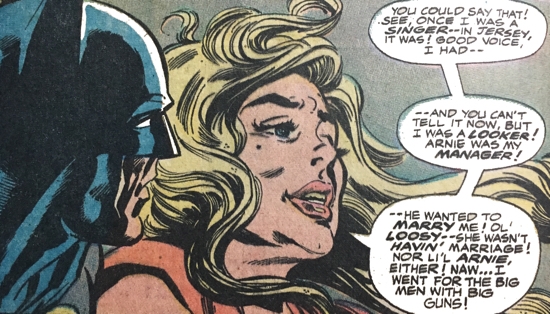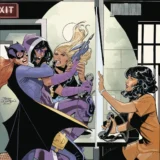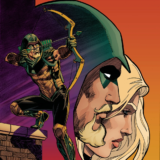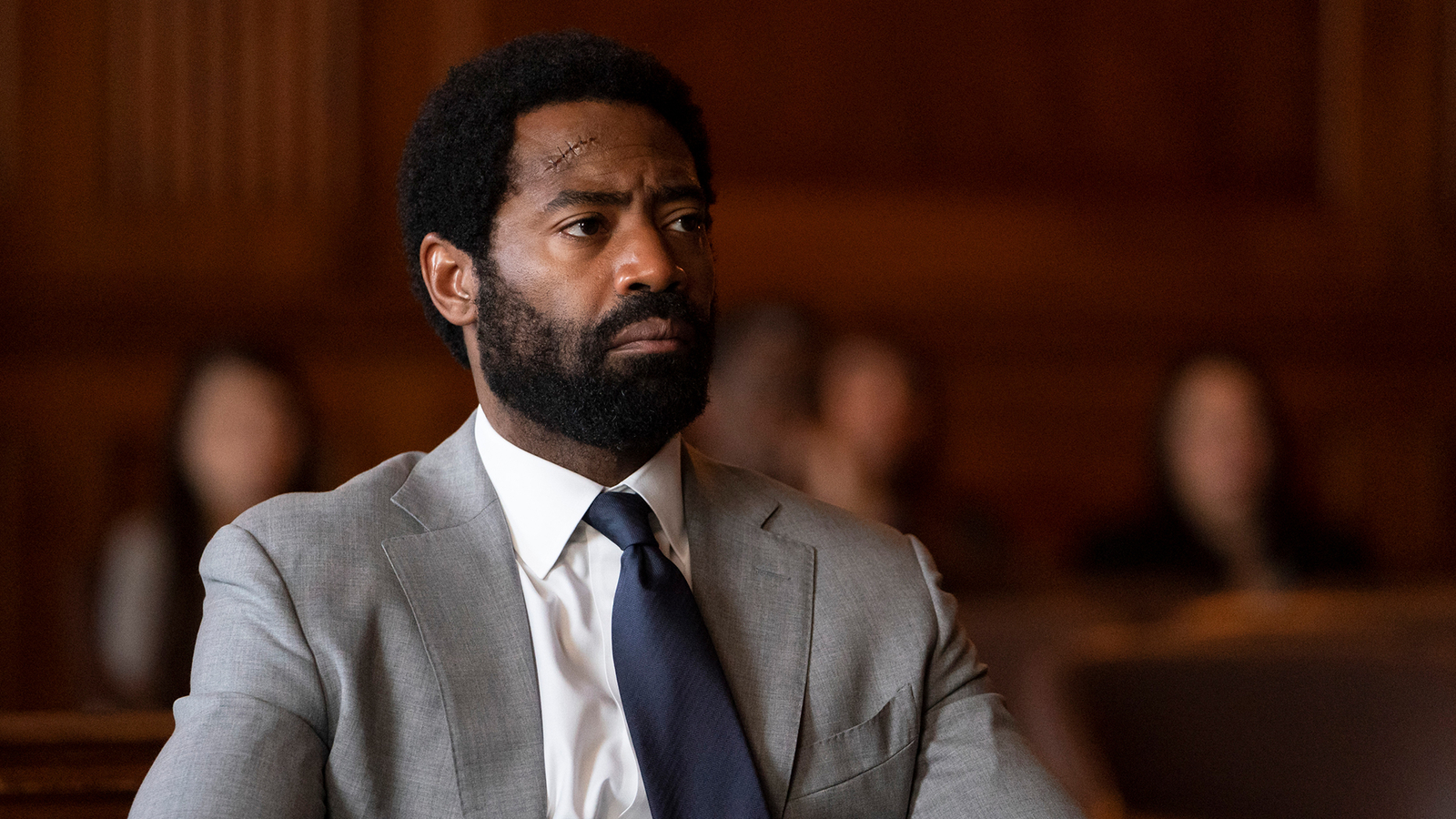Ed Catto: Watching the Detectives
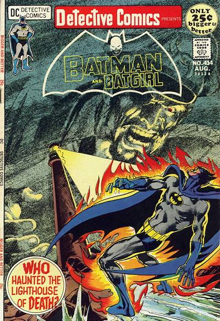 Detective Comics is the longest running American comic book series. It was so important to the publisher, an outfit called National Periodical Publications, that one day they officially changed their name to reflect comic’s initials. They became DC Comics. Oh, sure, Detective Comics Comics doesn’t make sense, but let’s not split hairs and just chalk it all up to simpler times.
Detective Comics is the longest running American comic book series. It was so important to the publisher, an outfit called National Periodical Publications, that one day they officially changed their name to reflect comic’s initials. They became DC Comics. Oh, sure, Detective Comics Comics doesn’t make sense, but let’s not split hairs and just chalk it all up to simpler times.
I’ve been reading Detective Comics for as long as I’ve been reading. Batman was the lead character since #27, 1939, and in the early days I admit I’d often choose the latest issue of Batman – with that big Batman logo – instead of the latest Detective Comics.
But then, right about the time that I was actively buying and reading comics on my own with minimal parental supervision, Detective Comics shifted direction. Batman’s superhero adventures morphed into detective and mystery stories. Many stories embraced a whodunit feel. And as an adolescent who was trying to leave behind the camp of the Batman TV series, this version seemed in synch with I wanted at the time.
Actually, Detective Comics would have many incarnations over the years. For a while it became “The Batman Family” and offered a variety of adventures of Bat-characters and detectives. Steve Englehart and Marshall Rogers, helped initially by Walter Simonson, created one of the most definitive versions of a mysterious yet well-rounded Batman in a 70s run of Detective Comics. And for a while in the 80s, the plotlines of Detective Comics were intertwining with the Batman title, like comic double helix/DNA strands, to create a twice-monthly ongoing soap opera style narrative.
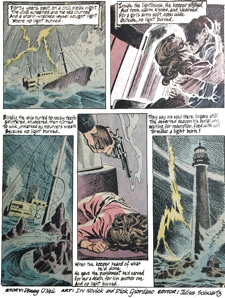 Surprisingly, I’m really enjoying the current Detective Comics series that’s part of DC’s Rebirth. Like so many TV dramas, it’s about a team of people working together in the cause of justice. In his book The Caped Crusade and the Rise of Nerd Culture, author Glen Weldon made the point that Batman always starts by being a loner and eventually transforms to a person surrounded by a group or family. That’s definitely the case here.
Surprisingly, I’m really enjoying the current Detective Comics series that’s part of DC’s Rebirth. Like so many TV dramas, it’s about a team of people working together in the cause of justice. In his book The Caped Crusade and the Rise of Nerd Culture, author Glen Weldon made the point that Batman always starts by being a loner and eventually transforms to a person surrounded by a group or family. That’s definitely the case here.
Each issue is adorned with a classic Detective Comics logo and the stories are full of lush, detailed art that often showcases smooth and confident inking.
One would think a traditionalist like me wouldn’t enjoy a Batman Team book, but somehow it all works.
But the other day, I ended up enjoying an old treasure. I happened across my ragged copy of Detective Comics #414, 1972. It’s a wonderful comic for so many reasons. I won’t say, “they don’t make them like that anymore,” but… they don’t.
The powerful Neal Adams cover creates a stunning sense of urgency. It might seem odd that a lighthouse is causing Batman to burst into flames while a ghostly specter angrily lords over it all – but it sure does look great.
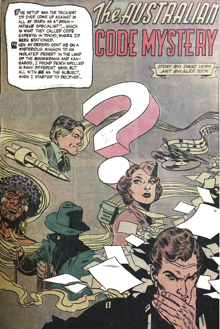 From the vantage point of today, I’m especially impressed that the paste-up person in the production department tried to minimize the logo with a window-like effect. I understand that it’s necessary, but the trade dress just seems out of place on this stunning illustration
From the vantage point of today, I’m especially impressed that the paste-up person in the production department tried to minimize the logo with a window-like effect. I understand that it’s necessary, but the trade dress just seems out of place on this stunning illustration
The lead story stars Batman. It’s called “Legend of the Key Hook Lighthouse,” and starts off in a unique way – with a poem.
“One of the pleasures in working for editors like Julie Schwartz was that he’d allow his writers to stray from the beaten path, do wacky stuff like open on a poem,” writer Denny O’Neil reflected. “I remember very few details, but I do recall enjoying the writing of the story.”
The pencils for this page, by the often under-rated Irv Novick, are inked in a clever olde tyme/Gibson Girl style by Dick Giordano. The unorthodox inking visually reinforces the poem in this unique opening sequence.
The action starts in earnest on the second page. There we first see Batman, lurking in rafters of a Florida bar. He’s been tracking a planned arms sale and is just about ready to pounce.
The villain is the forgettable General Ruizo. He was a kind of a one-hit wonder, but without the “hit” part. The character who really steals the show is Loosy. She’s a faded beauty with a sordid past and a lifetime of regrets. She’s the type of character that you seldom see in the comics, and her tale of redemption, and Batman’s eventual respect for her, is heartfelt, natural and enduring.
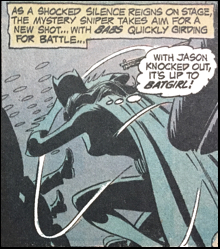 To O’Neil’s credit, Loosy is the type of character that you remember for years. I’ve remembered her for about 45 years.
To O’Neil’s credit, Loosy is the type of character that you remember for years. I’ve remembered her for about 45 years.
Batgirl and her detective boyfriend, Jason Bard, star in the second story, “Invitation to Murder.” The Frank Robbins, a fantastic artist, wrote this mystery. Longtime comics veteran Don Heck supplied the art. One might reflect on the inky similarities of Robbins’ and Heck’s art styles, but Heck’s art on this particular effort seems rushed and uninspired.
Still… extra points go to Babs (Batgirl) Gordon for one of the quickest costume changes – and the reverse change back into civilian clothes – in comic book history. In this adventure, she seems to transform in those little white gutters between the panels!
This was the first issue of Detective Comics that had jumped to the then-overwhelming price of 25 cents. In order to compensate drastic price hike, several additional stories were added. But even so, Carmine Infantino implored fans to listen to the publisher’s reasoning for the price increase. “Let’s rap,” he asked in the half-page editorial notice. He explained that they would be adding pages added to compensate for increased price. “Not just ordinary pages,” he promises, “but specially selected stories that we were planning for special time…and that time is now!’
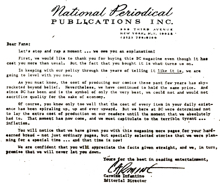 These special pages, in this particular comic, included two reprint stories. One story is a Gardner Fox/Carmine Infantino mystery thriller, where the actor who plays the lead in a TV show called Mark Gordon, Private Eye is whisked to Venus. They needed the help of real detective and thought the TV broadcasts were a documentary. This premise would be repeated many times over the years, most notably in the faux-Star Trek movie: Galaxy Quest.
These special pages, in this particular comic, included two reprint stories. One story is a Gardner Fox/Carmine Infantino mystery thriller, where the actor who plays the lead in a TV show called Mark Gordon, Private Eye is whisked to Venus. They needed the help of real detective and thought the TV broadcasts were a documentary. This premise would be repeated many times over the years, most notably in the faux-Star Trek movie: Galaxy Quest.
It’s notable that the Venusians seem to look just like the Martians of the DC mythology. They are both tall green beings with blue capes topped off by oversized “opera style” collars. But who knows, maybe this was all a prank courtesy of J’Onn J’Onzz.
You may recall that J’Onn J’Onzz, The Martian Manhunter, was also a Detective Comics alumnus, so perhaps it was fitting. It all comes full circle, as J’Onn J’Onzz is now on TV each week in the Supergirl series.
(I still can’t believe that he’s on TV every week.)
The other reprint, a detective story called “The Australian Code Mystery,” is a real treat. Alex Toth’s art is masterful, creative and economical. David Vern wrote the story, and Mike Gold had some interesting insights about him:
Given my background in the youth social services field, at DC Comics I often was the go-to guy when somebody wanted to get a youth culture reference right. One day in, I believe, 1977, I was in my office pontificating on the subject of the availability of “pure” THC (tetrahydrocannabinol; the psychoactive part of marijuana). Lots of kids thought that various street drugs actually were THC, and I pointed out that THC per se wasn’t readily available outside of a laboratory that isn’t in the United States. I was asked about “angel dust,” which, in those days, often was sold as THC. In fact, angel dust usually was phencyclidine, a.k.a. PCP. As I said the word “phencyclidine” Dave Vern was visiting the office next to mine. He came running in to my area.
“Phencyclidine?” Dave asked. “PCP?” “Yeah,” I responded. “Angel dust.” Dave went into an excited and unending rant. “Great stuff! Powerful hallucinations! Makes a man out of you!”
“Well, sure, if you don’t mind the delusions and risk of seizure,” I replied, trying to be humorous.
“Of course it does! Why else use the stuff?”
“Because that’s the shit they inject into large simians in the last reel of ape movies!” I pointed out.
“Damn right it is,” Dave responded. He was about 53 at the time, and in those days serious, knowledgeable dopers did not look like Dave Vern, who appeared as though he might fill in for Principal Conklin on Our Miss Brooks. After Dave returned to his chores, one of the folks in my office said, “What would Batman say?” I think a better question would involve one of his best-known co-creations: What would Deadshot say?
 Yes, David Vern, later called David V. Reed, was responsible for many important elements of Bat-Mythology. In addition to co-creating Deadshot, he also revamped the Batplane and reintroduced The Joker and Two-Face. Vern wrote “The Joker’s Utility Belt,” which would be adapted as memorable episodes of the 1960s Batman TV series. Two of his Batman stories, “Ride Bat-Hombre, Ride!” (drawn by Dick Sprang and Charles Paris) and “The Last Batman Story–?” (drawn by Walt Simonson and Dick Giordano) are among my personal favorites.
Yes, David Vern, later called David V. Reed, was responsible for many important elements of Bat-Mythology. In addition to co-creating Deadshot, he also revamped the Batplane and reintroduced The Joker and Two-Face. Vern wrote “The Joker’s Utility Belt,” which would be adapted as memorable episodes of the 1960s Batman TV series. Two of his Batman stories, “Ride Bat-Hombre, Ride!” (drawn by Dick Sprang and Charles Paris) and “The Last Batman Story–?” (drawn by Walt Simonson and Dick Giordano) are among my personal favorites.
The back cover ad, announcing the short-lived Hot Birds toy, is just glorious! I imagine that the folks at Mattel were asking, “How can we extend the Hot Wheels brand?” Whoever raised their hand in that meeting and suggested, “What if we make them airplanes?” would have been regarded as a genius in my neighborhood. My brother Colin and I, aided by our neighborhood gang, instantly embarked on a mission to collect all the Hot Birds die-cast planes.
There were only six Hot Birds produced. Upon reflection, that’s probably a good thing.
But hey, that’s enough nostalgia! I’m looking forward to the next issue of Detective Comics. And kudos to all the talented creative types who take a magazine that’s been published since 1939 and making it seem so fresh and new!
* * *
For more of my Bat-writing, be sure to look for The Overstreet Comic Book Price Guide no.46 for my Legends of the Dark Knight essay. It’s on sale this summer. You just won’t be able to miss Jim Steranko’s Bat-Cover.


